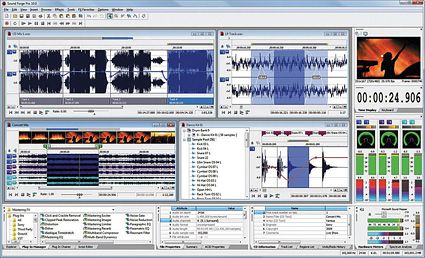

Audacity allows you to set a timer to begin recording after a small interval, in case, for example, your recording position is somewhere away from the computer itself. You can quickly select between the available audio sources via the drop-down menu underneath the sound level meters on top. To get started with Audacity, either drag a sound you want to edit into the main window or click the record button to start recording from your computer's built-in microphone or attached audio interface. I tested Audacity 2.3.2 on a MacBook Pro 15-inch (2017) with 16GB RAM, a 256GB SSD, macOS Mojave 10.14.6, along with a Focusrite Scarlett 6i6 audio interface. The system requirements are so minimal that it's not even worth mentioning them if your PC turns on and was built sometime in the past 10 or 15 years, it should be fine. Start Recording Podcasts and MusicĪudacity is available for Windows, macOS, and Linux. Even so, Audacity is still many people's go-to choice for quick-and-dirty audio work, and in testing, it's easy to see why. While you get unlimited undos and redos, Audacity's edits are almost always destructive, so it won't replace a proper digital audio workstation like the Editors' Choice Avid Pro Tools. It also offers flexible editing down to the sample level as well as spectrogram and spectral views for analyzing frequency response. The program lets you easily import, mix, and combine audio tracks (stereo, mono, or even multitracked recording) and render the output as one. A powerful, free, open-source audio editor that's been available for years, Audacity works smoothly with up to 32-bit/384kHz audio, complete with built-in dithering.

Oh well.If you're looking to start a podcast or record music, or if you just need a tool to assemble and convert some audio samples, it's tough to go wrong with Audacity. You can hear some moments when we didn't track the auto-gain function properly. We did the inversion trick, added a little noise reduction and went with it. Here's a piece we shot that had as much 60 Hz hum and buzz as we had signal - in the part that has no music or sound effects! (About 1:15) Noise reduction programs totally ruined the dialog. They tend to change the tone of your sound a bit, so tread lightly. Noise Reduction programs, on the other hand, work by filtering certain frequencies. You can then use a noise reduction program to get rid of the residual.īy adding the compliment of the noise, you don't step on the original recording at all. If there was any automatic or manual gain adjustment during recording, it will take some time to match that. If it's a repetitive noise, such as 60 Hz hum, the most effective way to get rid of it is to sample a noise-only segment, invert it, loop it and add it to the original in just the right amount.


 0 kommentar(er)
0 kommentar(er)
